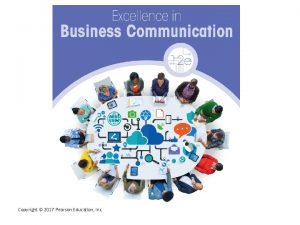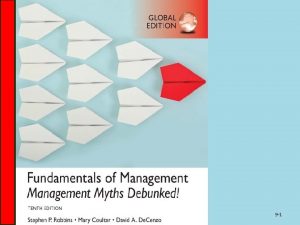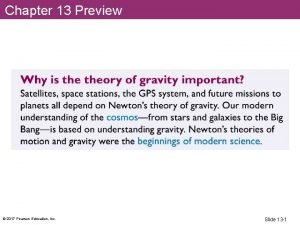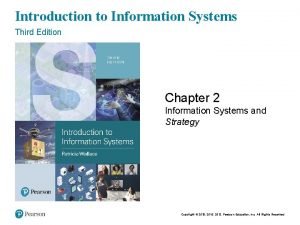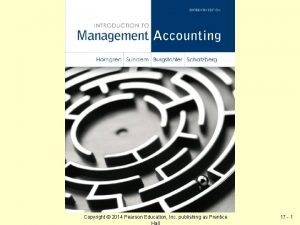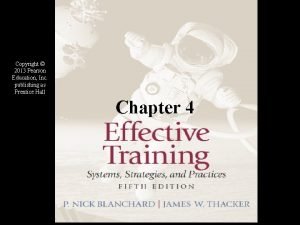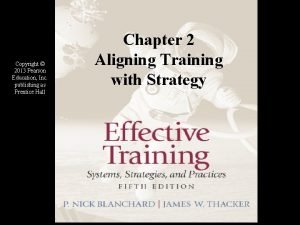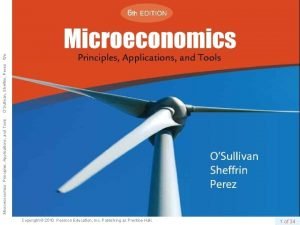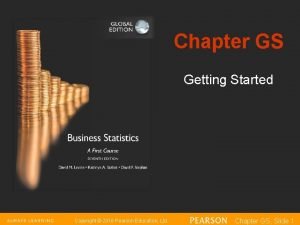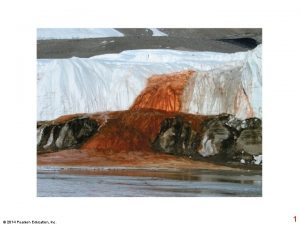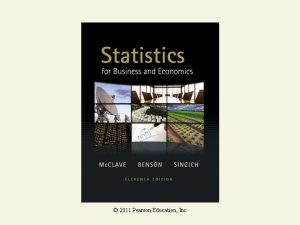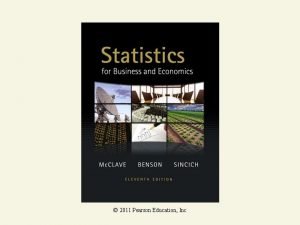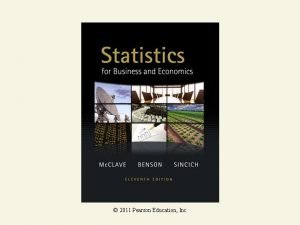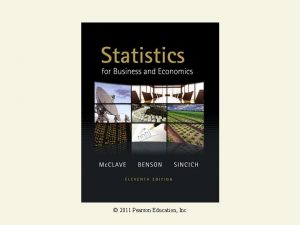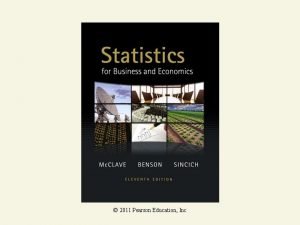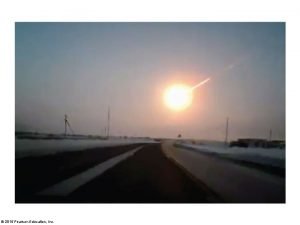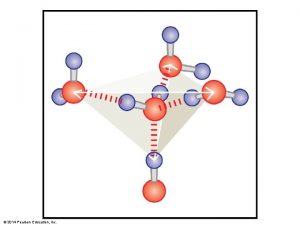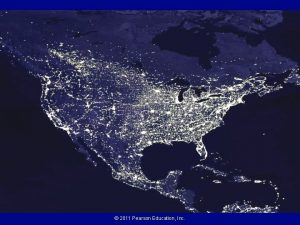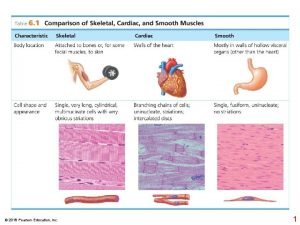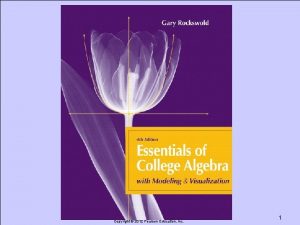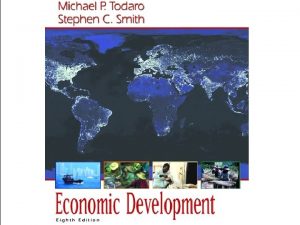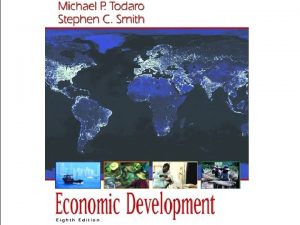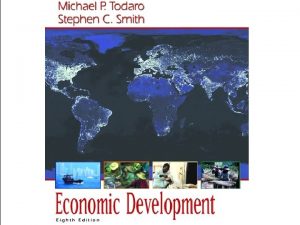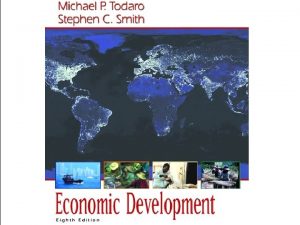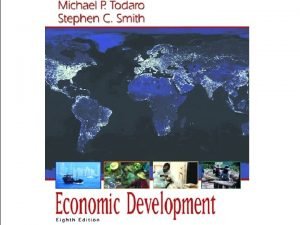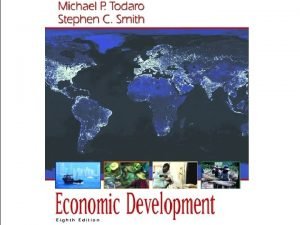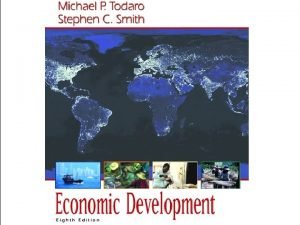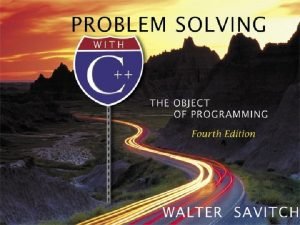Chapter 13 Preview 2017 Pearson Education Inc Slide























































- Slides: 55

Chapter 13 Preview © 2017 Pearson Education, Inc. Slide 13 -1

Chapter 13 Reading Questions © 2017 Pearson Education, Inc. Slide 13 -2

Reading Question 13. 2 What is the geometric shape of a planetary or satellite orbit? A. B. C. D. E. Circle Hyperbola Sphere Parabola Ellipse © 2017 Pearson Education, Inc. Slide 13 -3

Reading Question 13. 2 What is the geometric shape of a planetary or satellite orbit? A. B. C. D. E. Circle Hyperbola Sphere Parabola Ellipse © 2017 Pearson Education, Inc. Slide 13 -4

Chapter 13 Content, Examples, and Quick. Check Questions © 2017 Pearson Education, Inc. Slide 13 -5

Kepler’s First Law of Planetary Motion 1. Planets move in elliptical orbits, with the sun at one focus of the ellipse. © 2017 Pearson Education, Inc. Slide 13 -6

Kepler’s Second Law of Planetary Motion 2. A line drawn between the sun and a planet sweeps out equal areas during equal intervals of time. © 2017 Pearson Education, Inc. Slide 13 -7

Kepler’s Third Law of Planetary Motion 3. The square of a planet’s orbital period is proportional to the cube of the semimajor-axis length. © 2017 Pearson Education, Inc. Slide 13 -8

Kepler’s Laws of Planetary Motion § A circular orbit is a special case of an elliptical orbit. © 2017 Pearson Education, Inc. Slide 13 -9

Newton’s Law of Gravity § The moon is in free fall around the earth. © 2017 Pearson Education, Inc. Slide 13 -10

Newton’s Law of Gravity § The gravitational constant is a universal constant with the value G = 6. 67× 10– 11 N m 2/kg 2 © 2017 Pearson Education, Inc. Slide 13 -11

Newton’s Law of Gravity § The gravitational force is an inverse-square force. © 2017 Pearson Education, Inc. Slide 13 -12

What is an inverse square law § Generally in physics, systems follow an inverse square law when there is a point (either a source or a sink) in a field and the field spreads out uniformly in 3 dimensions from that point. § Brainstorm some other phenomenon in physics which meet this criteria? © 2017 Pearson Education, Inc. Slide 13 -13

Thought experiment § How would Newton’s law of universal gravity look in flat land? © 2017 Pearson Education, Inc. Slide 13 -14

Quick. Check 13. 1 The force of Planet Y on Planet X is ___ the magnitude of X on Y. A. B. C. D. E. One quarter One half The same as Twice Four times © 2017 Pearson Education, Inc. Slide 13 -15

Quick. Check 13. 1 The force of Planet Y on Planet X is ___ the magnitude of X on Y. A. B. C. D. E. One quarter One half The same as Twice Four times © 2017 Pearson Education, Inc. Slide 13 -16

Quick. Check 13. 2 The gravitational force between two asteroids is 1, 000 N. What will the force be if the distance between the asteroids is doubled? A. 250, 000 N B. 500, 000 N C. 1, 000 N D. 2, 000 N E. 4, 000 N © 2017 Pearson Education, Inc. Slide 13 -17

Quick. Check 13. 2 The gravitational force between two asteroids is 1, 000 N. What will the force be if the distance between the asteroids is doubled? A. 250, 000 N B. 500, 000 N C. 1, 000 N D. 2, 000 N E. 4, 000 N © 2017 Pearson Education, Inc. Slide 13 -18

Quick. Check 13. 3 Three stars are aligned in a row. The net force on the star of mass 2 M is A. B. C. D. To the left. To the right. Zero. Not enough information to answer. © 2017 Pearson Education, Inc. Slide 13 -19

Quick. Check 13. 3 Three stars are aligned in a row. The net force on the star of mass 2 M is A. B. C. D. To the left. To the right. Zero. Not enough information to answer. © 2017 Pearson Education, Inc. Slide 13 -20

The Principle of Equivalence § The inertial mass of an object relates the net force acting on it to its acceleration: § The gravitational mass of an object appears in Newton’s law of gravity and determines the strength of the gravitational attraction: § The assertion that mgrav = minert is called the principle of equivalence. © 2017 Pearson Education, Inc. Slide 13 -21

Little g and Big G § An object of mass m sits on the surface of Planet X. § According to an observer on the planet, the gravitational force on m should be FG = mgsurface § According to Newton’s law of gravity, the gravitational force on m should be § These are the same if © 2017 Pearson Education, Inc. Slide 13 -22

Quick. Check 13. 4 Planet X has free-fall acceleration 8 m/s 2 at the surface. Planet Y has twice the mass and twice the radius of Planet X. On Planet Y A. B. C. D. E. g = 2 m/s 2 g = 4 m/s 2 g = 8 m/s 2 g = 16 m/s 2 g = 32 m/s 2 © 2017 Pearson Education, Inc. Slide 13 -23

Quick. Check 13. 4 Planet X has free-fall acceleration 8 m/s 2 at the surface. Planet Y has twice the mass and twice the radius of Planet X. On Planet Y A. B. C. D. E. g = 2 m/s 2 g = 4 m/s 2 g = 8 m/s 2 g = 16 m/s 2 g = 32 m/s 2 © 2017 Pearson Education, Inc. Slide 13 -24

Decrease of g with Distance § A satellite orbits the earth at height h above the earth’s surface. § The value of g at height h above sea level is where gearth = 9. 83 m/s 2 and Re = 6. 37× 106 m © 2017 Pearson Education, Inc. Slide 13 -25

Decrease of g with Distance © 2017 Pearson Education, Inc. Slide 13 -26

Holes § § § Due to spherical symmetry, when calculating the force of gravity from a spherical mass with radius R, you may treat the entire mass of the sphere as if it were at the center. Due to spherical symmetry, when calculating the force of gravity from a shell of mass with a radius R, when r<R Group Question: Consider a hole through the center of the earth. Assume the earth has a uniform density. A) find the force of gravity acting on an 80 kg person who has jumped down the hole and is half way between the surface and the center of the earth. B) Dan, draw the graph on the board. C) With your table, finish drawing the Force vs radius graph or 0<r<R(earth). © 2017 Pearson Education, Inc. Slide 13 -27

Gravitational Potential Energy § When two isolated masses m 1 and m 2 interact over large distances, they have a gravitational potential energy of where we have chosen the zero point of potential energy at r = ∞, where the masses will have no tendency, or potential, to move together. Note that this equation gives the potential energy of masses m 1 and m 2 when their centers are separated by a distance r. © 2017 Pearson Education, Inc. Slide 13 -28

Gravitational Potential Energy © 2017 Pearson Education, Inc. Slide 13 -29

Gravitational Potential Energy § Suppose two masses a distance r 1 apart are released from rest. § How will the small mass move as r decreases from r 1 to r 2? § At r 1 U is negative. § At r 2 |U| is larger and U is still negative, meaning that U has decreased. § As the system loses potential energy, it gains kinetic energy while conserving Emech. § The smaller mass speeds up as it falls. © 2017 Pearson Education, Inc. Slide 13 -30

Quick. Check 13. 6 Which system has more (larger absolute value) gravitational potential energy? A. System A B. System B C. They have the same gravitational potential energy. © 2017 Pearson Education, Inc. Slide 13 -31

Quick. Check 13. 6 Which system has more (larger absolute value) gravitational potential energy? A. System A B. System B C. They have the same gravitational potential energy. © 2017 Pearson Education, Inc. Slide 13 -32

Example 13. 2 Escape Speed © 2017 Pearson Education, Inc. Slide 13 -33

Example 13. 2 Escape Speed © 2017 Pearson Education, Inc. Slide 13 -34

Falling from Infinity § Consider a Universe with only two objects. You and Mars. If you began infinitely far from Mars and fell, how fast would you be moving when you hit the surface? § Solve the problem using Gravitational potential energy. § Setup the problem using Gravitational forces. © 2017 Pearson Education, Inc. Slide 13 -35

Gravitational Potential Energy § Consider a mass a distance y above the surface of the earth. § If y is very small compared to the radius of the earth, we can use the binomial approximation to show § Set U 0 = 0 and this is our familiar formula for UG. © 2017 Pearson Education, Inc. Slide 13 -36

Example 13. 3 The Speed of a Satellite © 2017 Pearson Education, Inc. Slide 13 -37

Satellite Orbits § A circle is a special case of an ellipse. § If a small mass m orbits a much larger mass M, the small mass is called a satellite. § The speed of a satellite in a circular orbit is: © 2017 Pearson Education, Inc. Slide 13 -38

Quick. Check 13. 7 Two satellites have circular orbits with the same radius. Which has a higher speed? A. The one with more mass. B. The one with less mass. C. They have the same speed. © 2017 Pearson Education, Inc. Slide 13 -39

Quick. Check 13. 7 Two satellites have circular orbits with the same radius. Which has a higher speed? A. The one with more mass. B. The one with less mass. C. They have the same speed. © 2017 Pearson Education, Inc. Slide 13 -40

Quick. Check 13. 8 Two identical satellites have different circular orbits. Which has a higher speed? A. The one in the larger orbit. B. The one in the smaller orbit. C. They have the same speed. © 2017 Pearson Education, Inc. Slide 13 -41

Quick. Check 13. 8 Two identical satellites have different circular orbits. Which has a higher speed? A. The one in the larger orbit. B. The one in the smaller orbit. C. They have the same speed. © 2017 Pearson Education, Inc. Slide 13 -42

Example 13. 4 The Speed of the Space Station © 2017 Pearson Education, Inc. Slide 13 -43

Recall: Kepler’s Third Law of Planetary Motion 3. The square of a planet’s orbital period is proportional to the cube of the semimajor-axis length. § The speed of a satellite in a circular orbit is § Squaring both sides and solving for T 2 gives § Planets are satellites of the sun, in orbits that are almost circular. The orbital radius = the semimajor-axis length for a circle. © 2017 Pearson Education, Inc. Slide 13 -44

Example 13. 5 Extrasolar Planets © 2017 Pearson Education, Inc. Slide 13 -45

Orbital Energetics § We know that for a satellite in a circular orbit, its speed is related to the size of its orbit by v 2 = GM/r. The satellite’s kinetic energy is thus § But –GMm/r is the potential energy, UG, so § If K and U do not have this relationship, then the trajectory will be elliptical rather than circular. So, the mechanical energy of a satellite in a circular orbit is always © 2017 Pearson Education, Inc. Slide 13 -46

Orbital Energetics § The figure shows the kinetic, potential, and total energy of a satellite in a circular orbit. § Notice how, for a circular orbit, Emech = ½ UG § It requires positive energy in order to lift a satellite into a higher orbit. © 2017 Pearson Education, Inc. Slide 13 -47

Example 13. 6 Raising a Satellite © 2017 Pearson Education, Inc. Slide 13 -48

Chapter 13 Summary Slides © 2017 Pearson Education, Inc. Slide 13 -49

General Principles © 2017 Pearson Education, Inc. Slide 13 -50

Important Concepts © 2017 Pearson Education, Inc. Slide 13 -51

Important Concepts © 2017 Pearson Education, Inc. Slide 13 -52

Important Concepts © 2017 Pearson Education, Inc. Slide 13 -53

Applications © 2017 Pearson Education, Inc. Slide 13 -54

Applications © 2017 Pearson Education, Inc. Slide 13 -55
 Copyright pearson education inc
Copyright pearson education inc Copyright by pearson education inc. answers
Copyright by pearson education inc. answers 2017 pearson education inc
2017 pearson education inc 2017 pearson education inc
2017 pearson education inc 2017 pearson education inc
2017 pearson education inc 2017 pearson education inc
2017 pearson education inc 2017 pearson education inc
2017 pearson education inc 2017 pearson education inc
2017 pearson education inc 2017 pearson education inc
2017 pearson education inc Nine compositional modes in digital media
Nine compositional modes in digital media 2017 pearson education inc
2017 pearson education inc 2017 pearson education inc
2017 pearson education inc 2017 pearson education inc
2017 pearson education inc 2017 pearson education inc
2017 pearson education inc Pearson education, inc. publishing as prentice hall
Pearson education, inc. publishing as prentice hall Pearson education inc publishing as pearson prentice hall
Pearson education inc publishing as pearson prentice hall Pearson education inc publishing as pearson prentice hall
Pearson education inc publishing as pearson prentice hall 2012 pearson education inc
2012 pearson education inc 2008 pearson prentice hall inc
2008 pearson prentice hall inc Pearson education
Pearson education Pearson education 2017
Pearson education 2017 Pearson education ltd 2017
Pearson education ltd 2017 Pearson education 2017
Pearson education 2017 Pearson education 2017
Pearson education 2017 Translation
Translation Ano ang heel and toe polka
Ano ang heel and toe polka 2018 pearson education inc
2018 pearson education inc Pearson education inc 4
Pearson education inc 4 Pearson education, inc.
Pearson education, inc. 2014 pearson education inc
2014 pearson education inc 2013 pearson education inc
2013 pearson education inc 2013 pearson education inc
2013 pearson education inc 2013 pearson education inc. answers
2013 pearson education inc. answers 2013 pearson education inc
2013 pearson education inc Pearson education inc. publishing as prentice hall
Pearson education inc. publishing as prentice hall 2012 pearson education inc
2012 pearson education inc Pearson education 2012
Pearson education 2012 2010 pearson education inc
2010 pearson education inc Copyright 2010 pearson education inc
Copyright 2010 pearson education inc 2009 pearson education inc
2009 pearson education inc 2016 pearson education inc
2016 pearson education inc Decimal in words example
Decimal in words example 2010 pearson education inc
2010 pearson education inc 2014 pearson education inc
2014 pearson education inc 2014 pearson education inc
2014 pearson education inc 2014 pearson education inc
2014 pearson education inc 2014 pearson education inc
2014 pearson education inc 2014 pearson education inc
2014 pearson education inc Water cycle pearson education
Water cycle pearson education 2014 pearson education inc
2014 pearson education inc 2012 pearson education inc
2012 pearson education inc 2011 pearson education inc
2011 pearson education inc 2011 pearson education inc
2011 pearson education inc 2011 pearson education inc
2011 pearson education inc Friedman rank test
Friedman rank test 2011 pearson education inc
2011 pearson education inc


